
January 2009
- Hazards Aloft: Solving wind turbines’ fall and confined space issues
- Incentives: They Motivate in a Bad Economy
- Respiratory Protection:Innovations Keep Coming
- Fire Prevention: Involve Your Safety Committees
Click here to subscribe.
Features
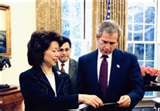
Eight years after she took the job, Labor Secretary Elaine Chao leaves the safety and health community wanting more from her successor.
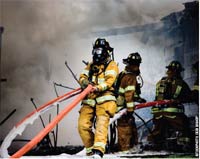
By Linda J. Sherrard
Smoke was billowing from the third-floor fire escape stairway of a hospital at 5 p.m. on a Friday. It is a scene I will always remember: Someone pulled a fire alarm, and soon the professional firefighters were dragging hoses as employees responded with hand-held fire extinguishers. Patients were moved to other floors, quickly and expertly. Years of training had come together in a fast facility response.
By Thomas W. Rimmer, Steven H. Yarnell
Forklift engine tune-ups using carbon monoxide measurements reduce emissions and worker exposure.
By
The economy is weak, and unemployment is growing. Most employees have watched their retirement accounts tumble in value. Prospects for raises this year appear dismal. It is understandable that many may feel depressed and hopeless. Just at a time when organizations need their employees to work even harder and with greater focus to maximize performance, morale in many places is probably at an all-time low.
By Tom Petersen
Planners need to address the impact of these projects, which can expose workers and patients to airborne dust, bacteria, and mold spores.
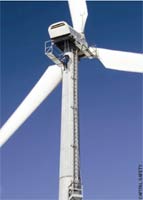
By Donald Galman
Wind towers reap the power of wind to generate electricity. How ironic, then, that wind towers can take the wind out of those who must repair, maintain, or inspect equipment there. According to one published account, three wind tower technicians were installing bolts in a turbine in a wind tower in Minnesota when their work ignited a fire. The tower quickly became engulfed in flames. One worker fell more than 200 feet and died; the other two escaped with injuries.
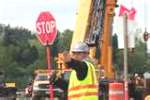
By Elizabeth K. Wilson
Taking extra precautions during temporary traffic control helps workers and motorists alike. Since Nov. 24, 2008, all workers in rights of way of federal-aid highways who are exposed to traffic must wear high-vis apparel meeting ANSI/ISEA 107-2004.
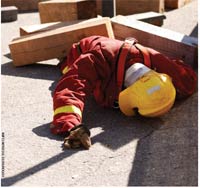
By Michael Bingham
When someone has a work-related incident or illness, one of the most critical steps toward preventing future incidents like it is to let all other workers know as soon as possible what happened.
By John L. Hierbaum
So what’s new with respirators? It’s true that most respirator designs do not change much from year to year. And when they do, the changes are very likely within the expected evolutionary range.Components are enhanced by technology to provide more safety for users. Cartridge designs are a little sleeker. The air for air-supplied respirators is bottled in a smaller or larger cylinder that may be made from a new material or improved by a new manufacturing process.
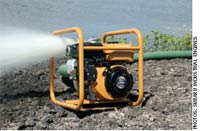
By Dale Gabrielse
From moving parts to flammable fluids,engines contain a number of materials that can harm a mechanic who’s not cautious. Some safety items may seem simple, but sometimes a little reminder can go a long way when the focus is on the job and safety measures are unintentionally neglected.
By Jean Marie Saidler
Gift card companies are a popular choice among corporations that give their employees motivational incentives for job performance and safety. It’s important to reward employees for performing their job well—and safely— by letting them know they are appreciated for their efforts. The byproduct of this is that your company will be rewarded with lowered insurance rates for safe work behavior and increased productivity from a decrease in employee absenteeism.

By Mike Flynn
Work can be a hazardous place. Accidents happen. Employees can slip, trip, or fall. They can be exposed to harmful chemicals or toxins. They can physically overexert themselves in strenuous situations. And the list goes on. Workplace accidents are the byproduct of unforeseen but, fortunately, often preventable causes.
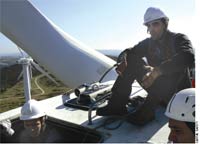
By Steve Jervis
The world is watching as more wind turbines are popping up to generate enough power to sustain a city, a state, or maybe even a country. Information and predictions about the wind energy market change every day. Every time someone estimates the market to be on a certain growth path, it turns out to be even bigger.
By Donald J. Friedman, John K. Roche
Under the “general duty” clause of the Occupational Safety and Health Act of 1970 (OSHA), 29 U.S.C. §§ 651- 678, “[e]ach employer . . . shall furnish to each of his employees employment and a place of employment which are free from recognized hazards that are causing or are likely to cause death or serious physical harm to his employees.”. There is little question that allowing guns at the workplace endangers workers.
Departments
By Ronnie Rittenberry
As we move closer as a nation to having a cell phone for every citizen, or at least every household, our constantly connected way of life is changing the American landscape. The tallest of the communication towers making our wireless evolution possible stretch up to 2,000 feet, a distance limited by the Federal Aviation Administration,which has determined that anything taller is a hazard to navigation.
By Robert Pater
So you want to improve your safety culture? Boost employee engagement, activate visible management leadership, heighten attention to safety, see all embrace personal safe behavior? Set a high-level baseline of awareness, judgment, and actions? Even when others know they’re not being closely observed?
By Marc Barrera
For a chemical manufacturer seeking to become a global supplier, keeping up with numerous foreign safety regulations and requirements can be quite a challenge. MSDgen®, a compliance tool from Carlsbad, Calif.-based 3E Co., was created to streamline one important aspect of this process, the creation and distribution of Material Safety Data Sheets (MSDSs).
By Linda J. Sherrard
Brutalized by the spiraling financial crises of 2008, most of us are thrilled the year has closed. Our sad awakening is that the pain of shrinking budgets, job losses, and more work with fewer resources continues for 2009! Stress is higher than usual on all parts of the workplace chain.